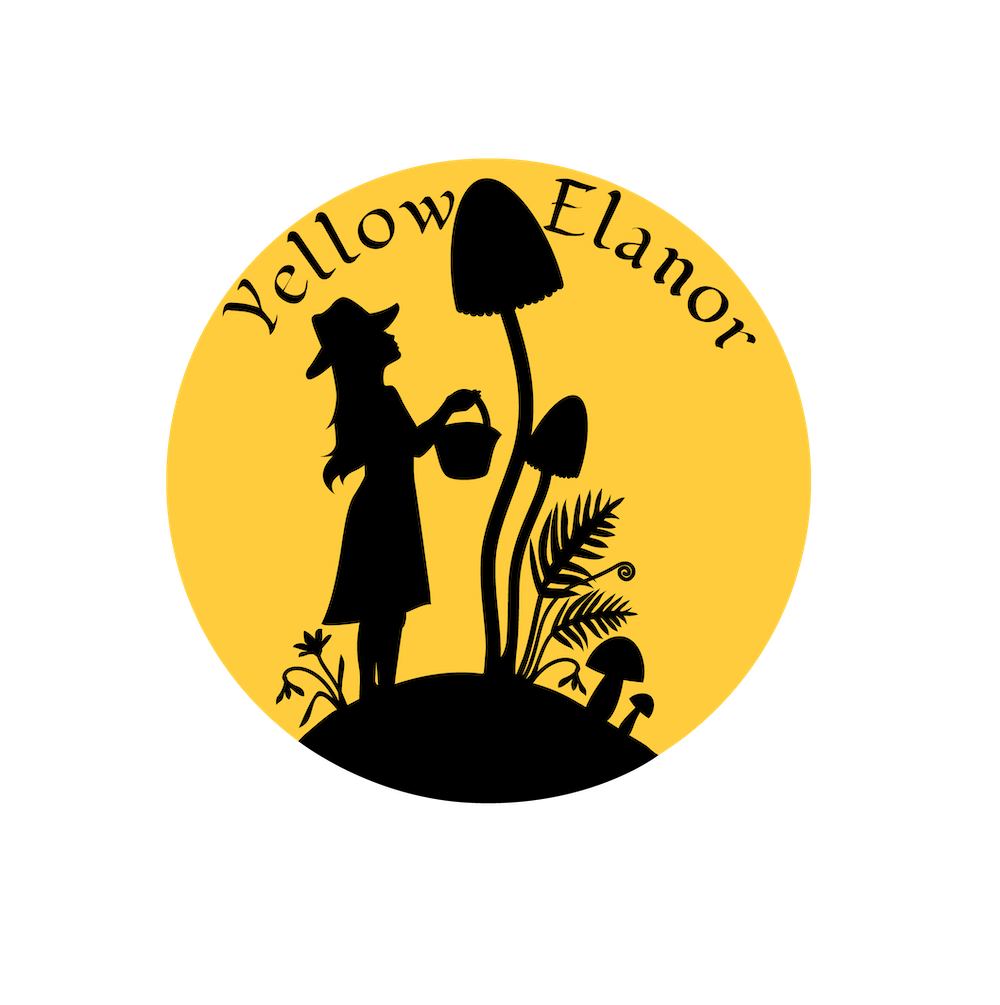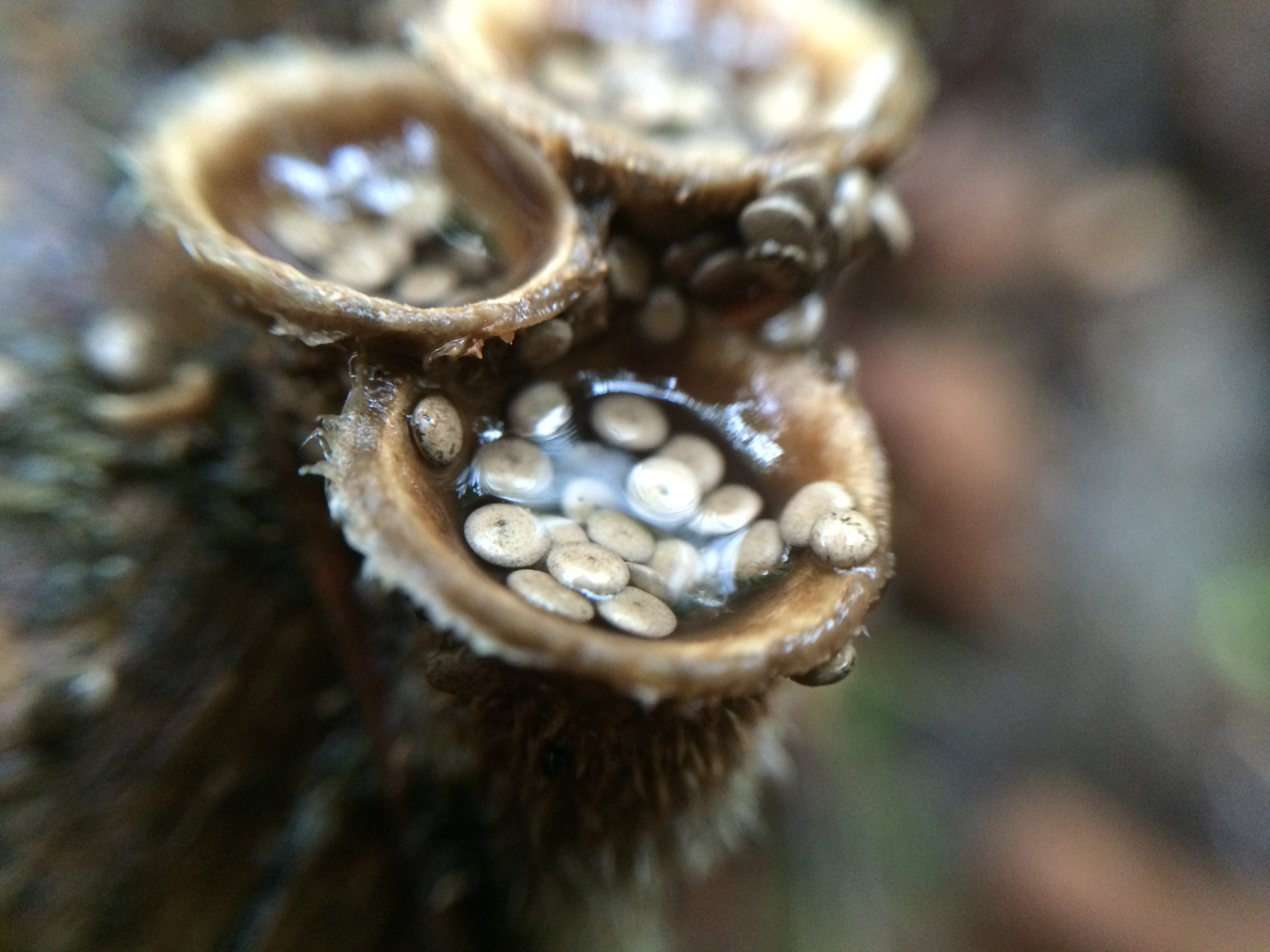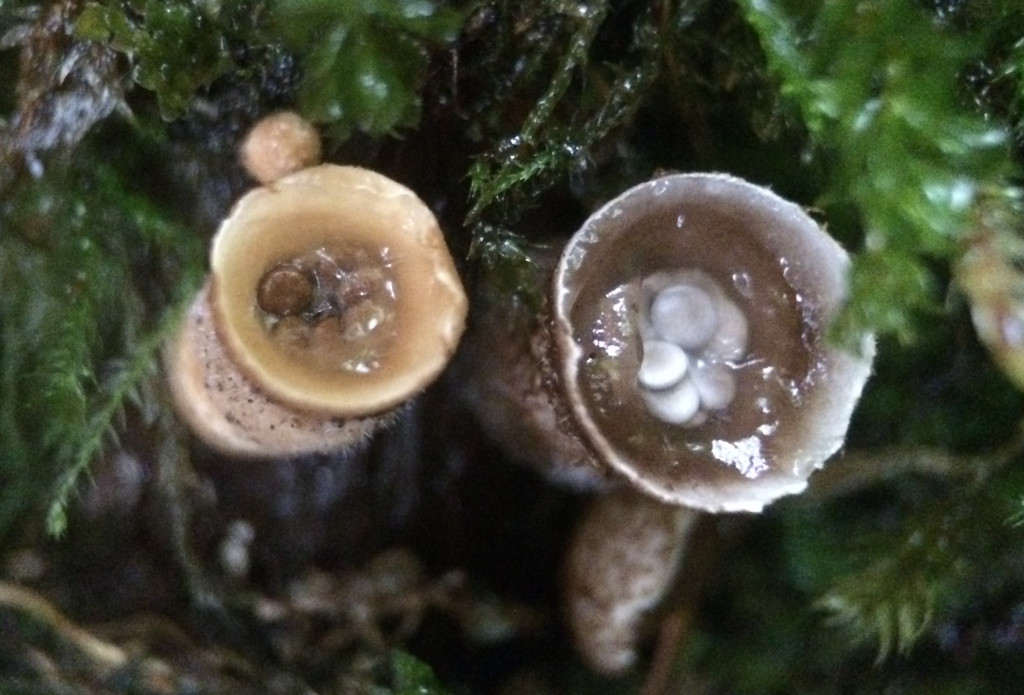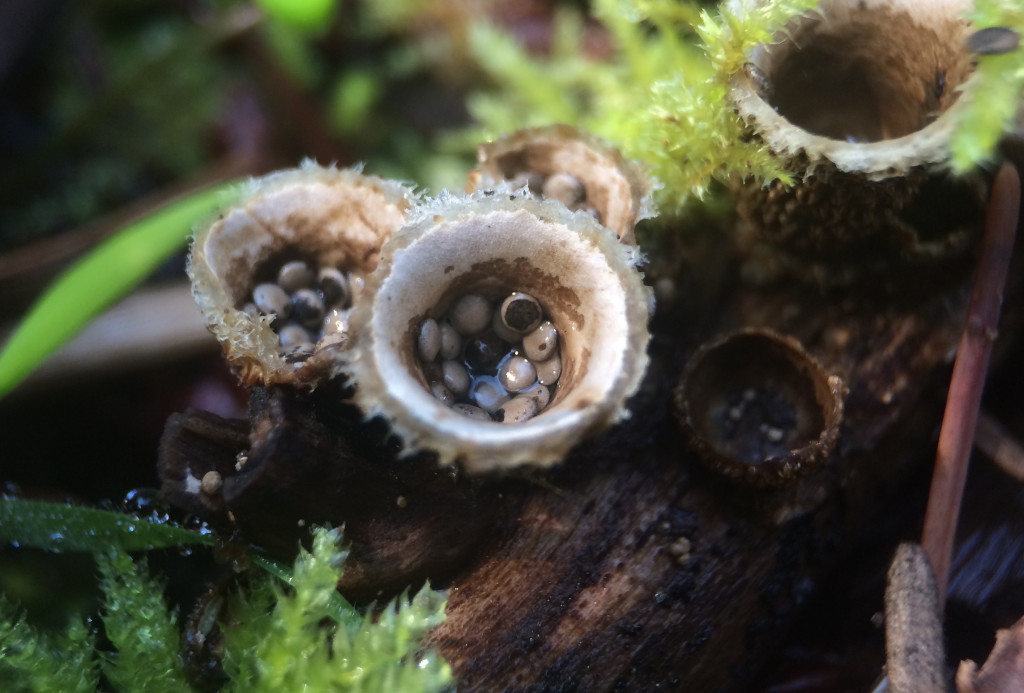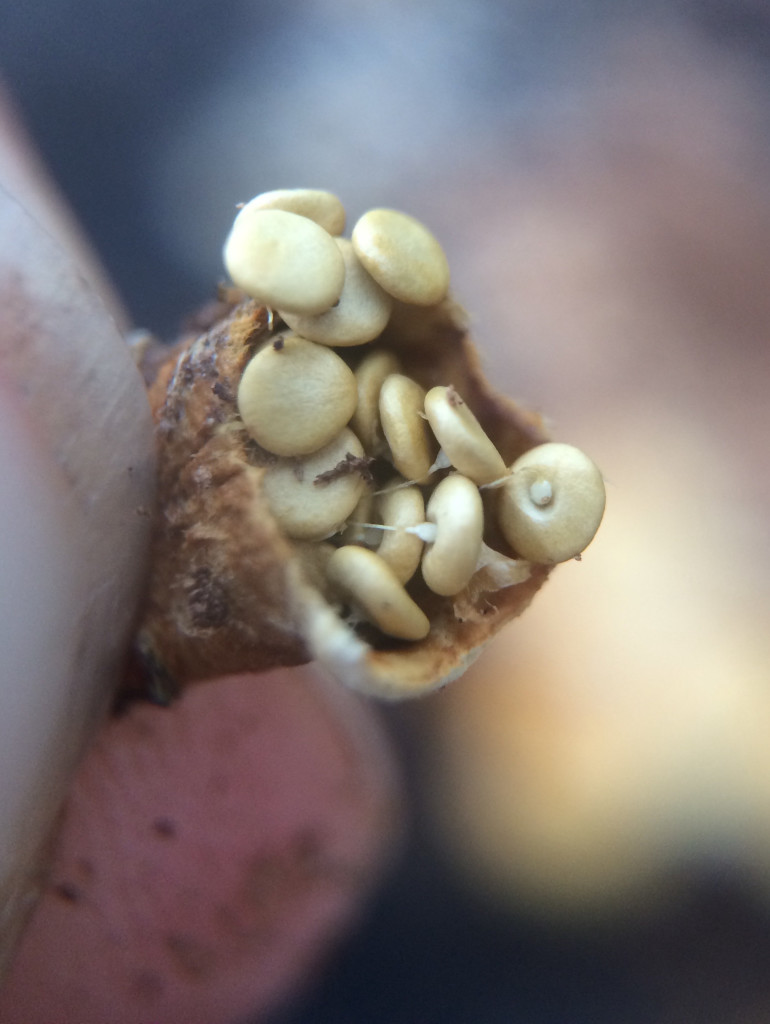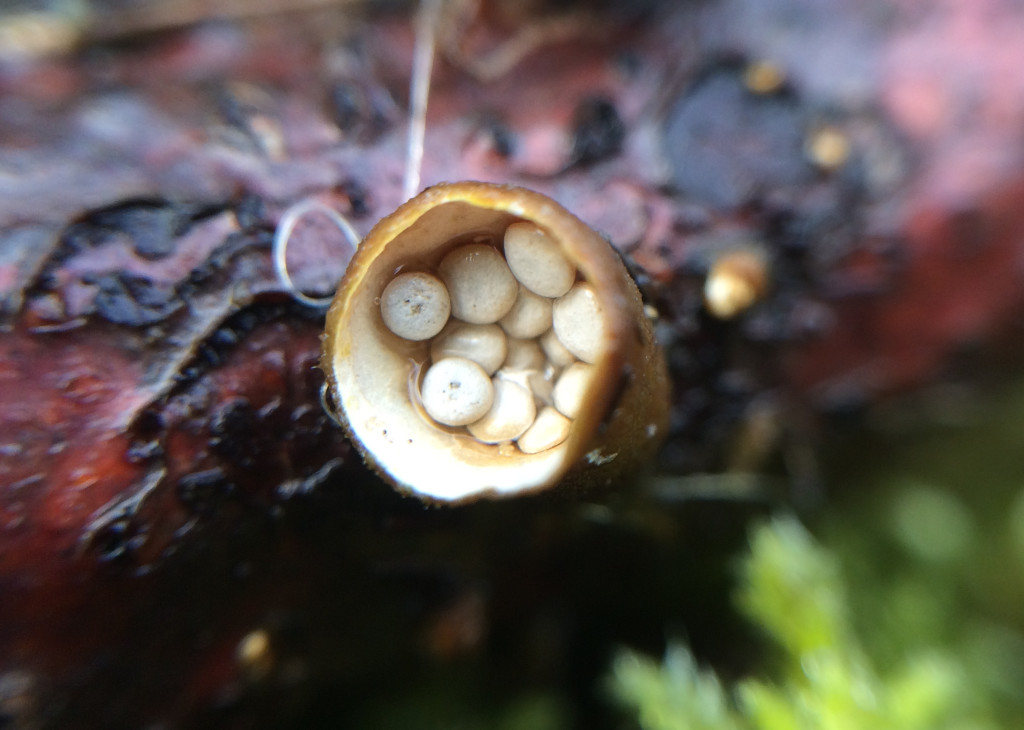Nothing about this fungi would make you think “mushroom” when you see it, as it’s name suggests it looks like a bird’s nest–a nest of the most miniature of birds with tiny eggs inside.
One thing I find fascinating about mushrooms are the various ways they assure reproduction occurs. For objects that can’t physically move much themselves, mushrooms make up for it in creativity to spread themselves and their spores far and wide.
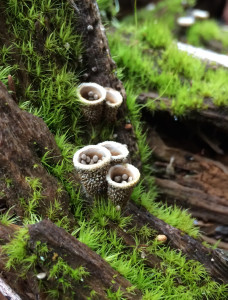
There are a handful of different species of Bird’s Nest fungi, but their essential structures are the same and you can find them on woody substrates, soil or dung. They are quite small, anywhere from 5-15 mm tall and 2-10 mm wide.
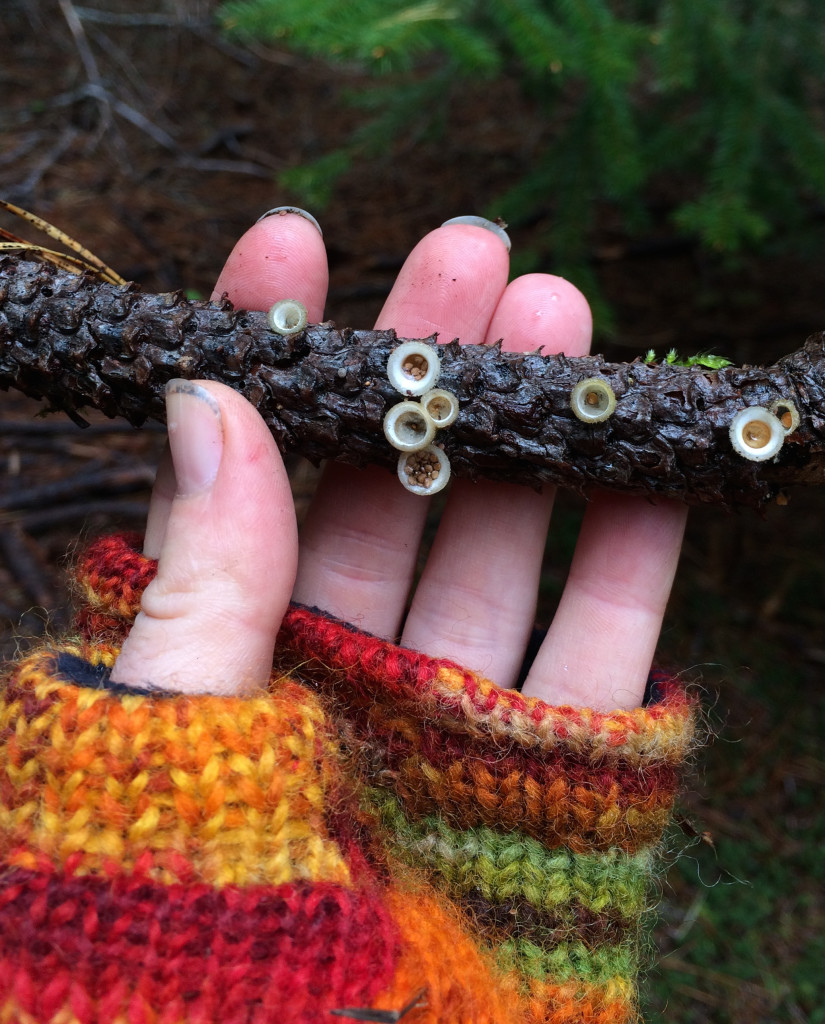 Perspective of the average sized Bird’s Nest, some species are larger and some even smaller!
Perspective of the average sized Bird’s Nest, some species are larger and some even smaller!
They begin as small enclosed, oblong shaped bodies, some a little fuzzy on the outside and some smooth. They eventually open up to reveal small egg like capsules inside, these small egg shaped capsules are filled with the mushroom’s spores. Depending on the species, the eggs may be white, grey/blue or shades of brown.
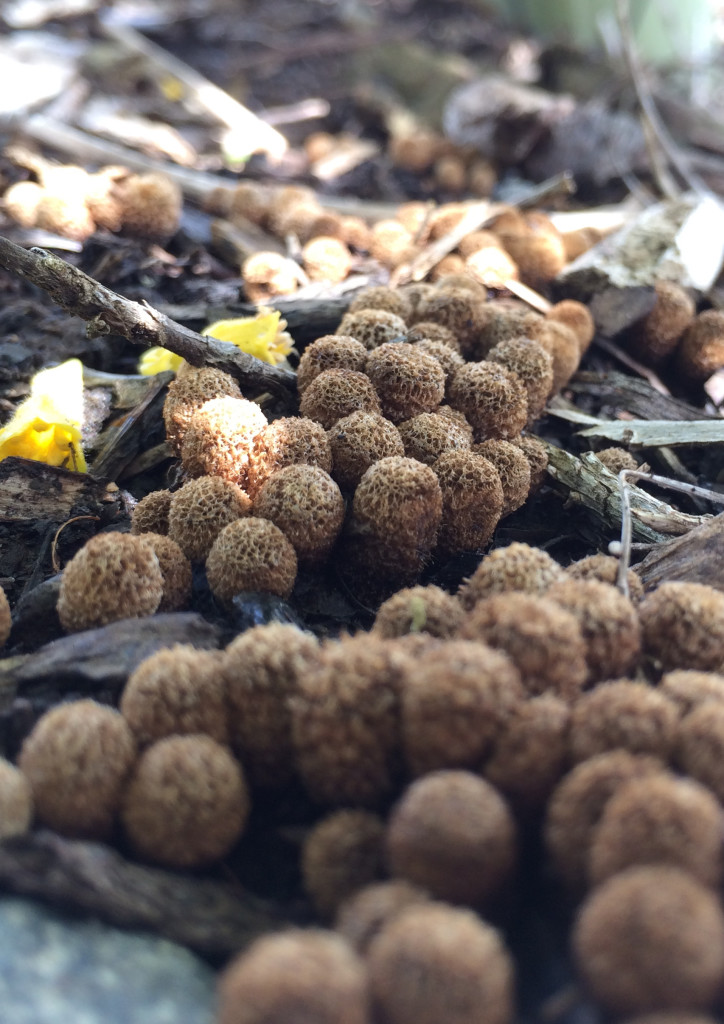 Fuzzy, still fully closed Bird’s Nest
Fuzzy, still fully closed Bird’s Nest
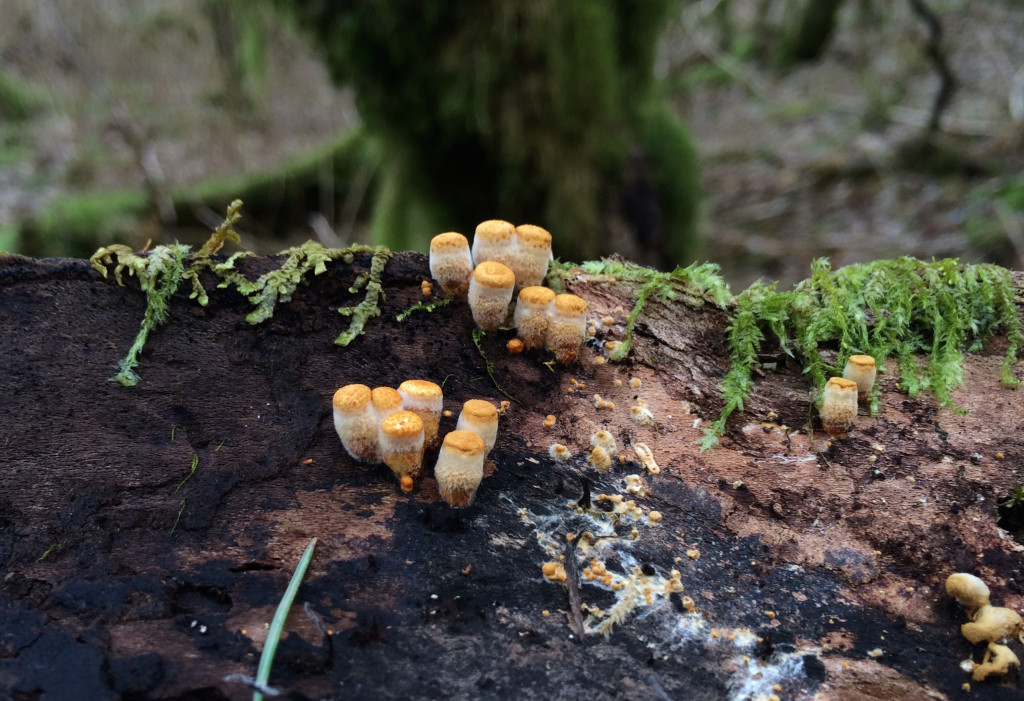
A different species of Bird’s Nest, not quite yet mature enough to be open
Two different species growing side by side, one with brown ‘eggs’ the other, white
Let’s talk about a few parts of this Bird’s Nest fungi:
Peridium=The structure of the mushroom, particularly the walls around the small ‘eggs’
Epiphragm=The thin membrane that initially covers the top of the ‘nest’
Peridioles=The small ‘eggs’ inside the nest, capsules that contain spores inside
The next photo exemplifies the stages Bird’s Nest goes through as it matures:
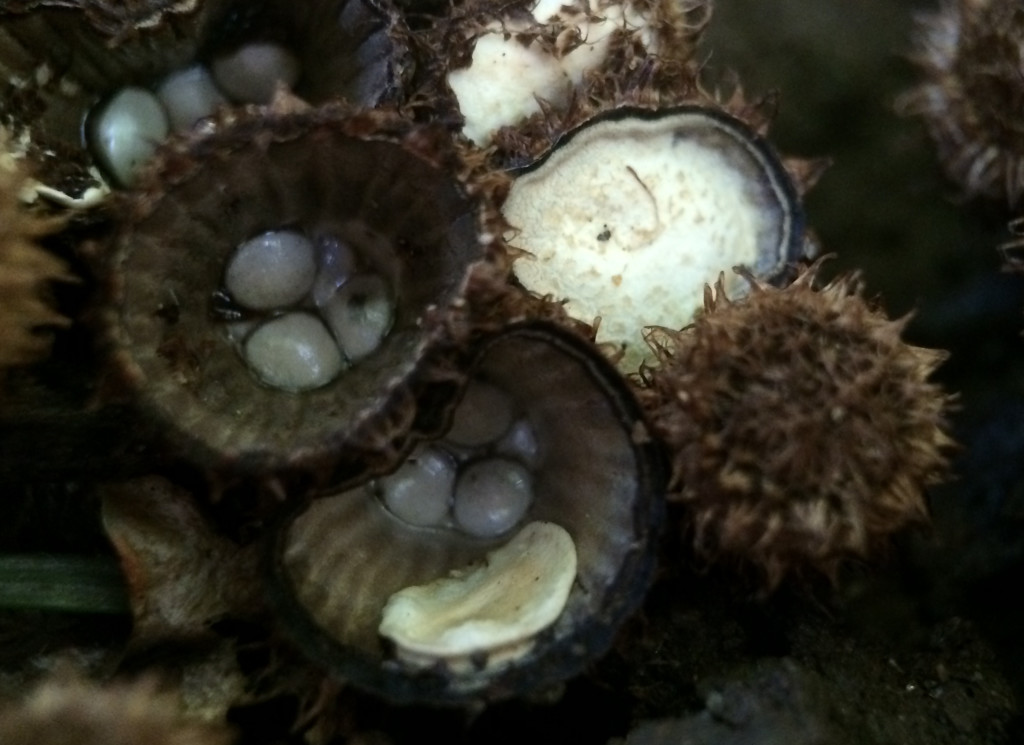
Cyathus Striatus species, one of the fuzzier of the Bird’s Nest species
First, on the right, a young, fuzzy, fully intact Bird’s Nest fruiting body, the peridium.
Second, just above is an example of the epiphragm, the membrane that stretches across the top of the nest. As the top of the nest grows and expands, the membrane breaks, as exemplified in the bottom nest where it barely hangs on to one portion of the open nest.
Finally, on the left is an opened, mature Bird’s Nest fungi, revealing small egg like peridioles. Those eggs contain the mushroom’s spores, and they await the right conditions for them to be dispersed.
The perineum is often referred to as a ‘splash cup’ because the rain will splash down into the cup, forcibly ejecting the peridioles/eggs-causing them to land up to 7 feet away!
Amongst the different species of Bird’s Nest Fungi, they assure their peridioles stick to nearby debris once ‘splashed out’–and they each do this one of two ways.
Some develop a jelly like bath that the peridioles sit in, this sticky gel helps adhere the peridioles to foliage as it is knocked out of the nest.
Some prefer a more complicated and fancy way of things.
Instead of being bathed in sticky jelly, the small eggs are attached to a small cord called a funiculus. The funiculus cord sits tightly wound underneath the egg, one end attached to the egg itself and the other end a sticky mass called the hapteron. When the rain hits inside the nest, the force is strong enough to dislodge the egg and cord, sending them flying out. The sticky end of the cord, the hapteron, clings to nearby debris and the force of the flight propels the cord and egg to attach with it.
In both cases, the preidioles/eggs now sit in prime position to disperse spores.
Look closely and you’ll see the funiculus cords attached to the peridioles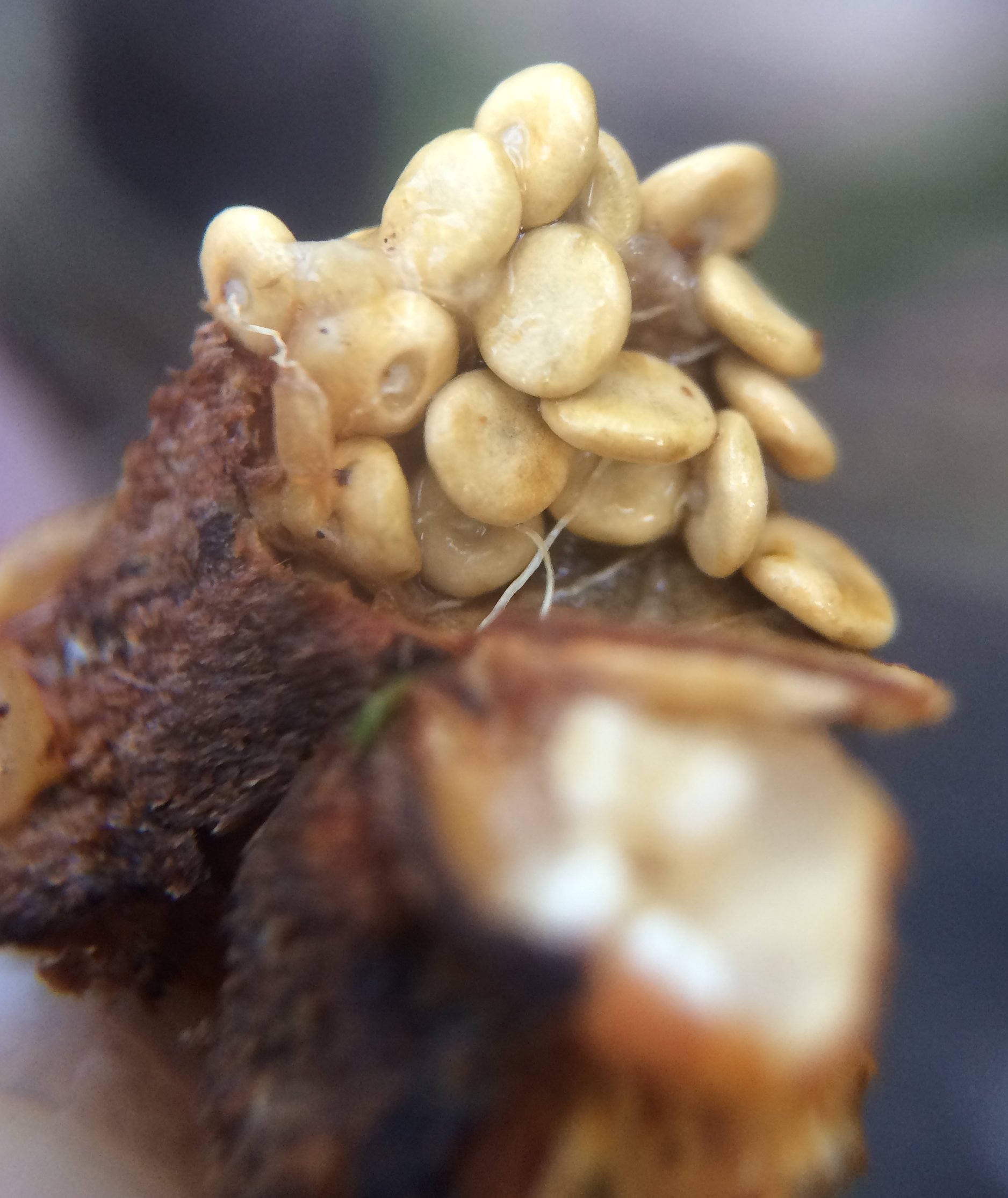 Remember how tiny Bird’s Nest Fungi is, even smaller the ‘eggs’ and even smaller the cords!
Remember how tiny Bird’s Nest Fungi is, even smaller the ‘eggs’ and even smaller the cords!
As mentioned, these ‘eggs’ are not spores themselves, but spore bearing capsules, eventually breaking down to release the spores at the right time. Most other mushrooms are prolific spore producing machines, pumping out as many spores as they can to assure reproduction. Bird’s Nest differs in that it only has a limited number of spores within it’s capsules-however, this does not cause a problem for this ingenious fungi. Within each capsule contains compatible mating strains. Reproduction in fungi is complex, some mate with themselves and others need compatible partners. It’s not so much a ‘male’ and ‘female’ component, but rather differing ‘types’ or strains that need to meet up and exchange a key element (or phone numbers, in case they really like each other). Within the ‘egg’ of a Bird’s Nest fungi are held both compatible mating strains, there is no need for them to pump out as many spores as other fungi because they have created the conditions to assure fertility.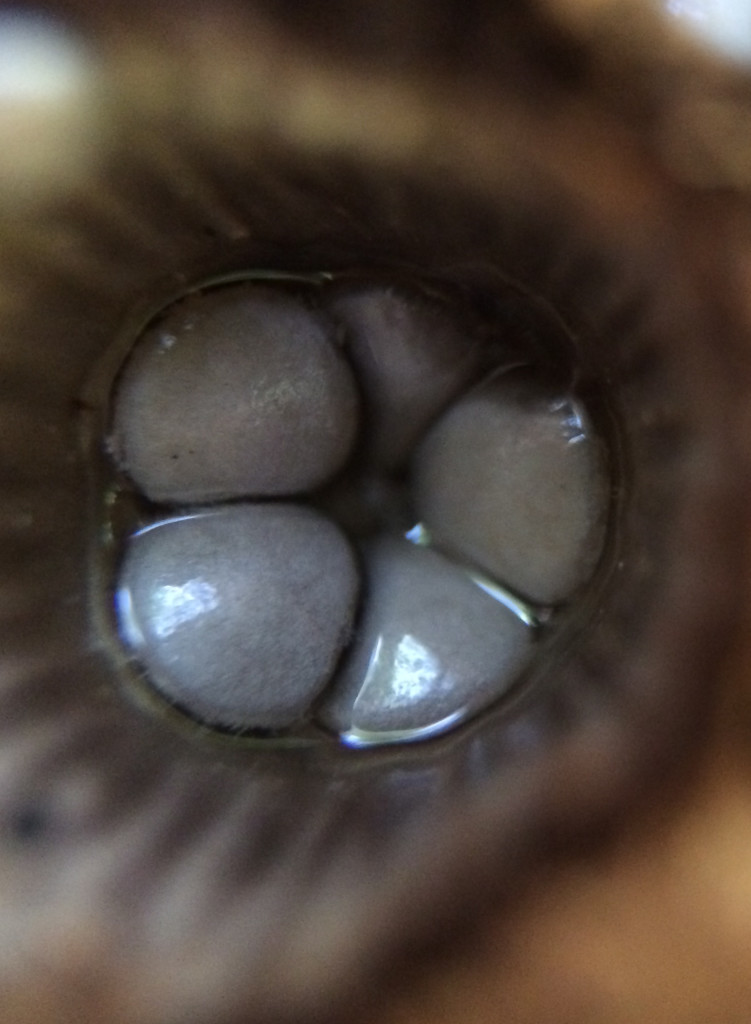
Are these things outstanding or what!
With how tiny these beautifully constructed fungi are, they can be hard to spot, but I guarantee if you keep an eye out it won’t be long before you begin to notice them everywhere. Urban areas, gardens, mulch piles, scattered about the forest floor. I don’t think there is a single foraging trip I take where I don’t happen upon them. The next time you come across some Bird’s Nest, be sure to take some extra time examining the intricate details and ponder the curious way they establish their reproduction.
The first Bird’s Nest I ever spotted, and the smallest yet.
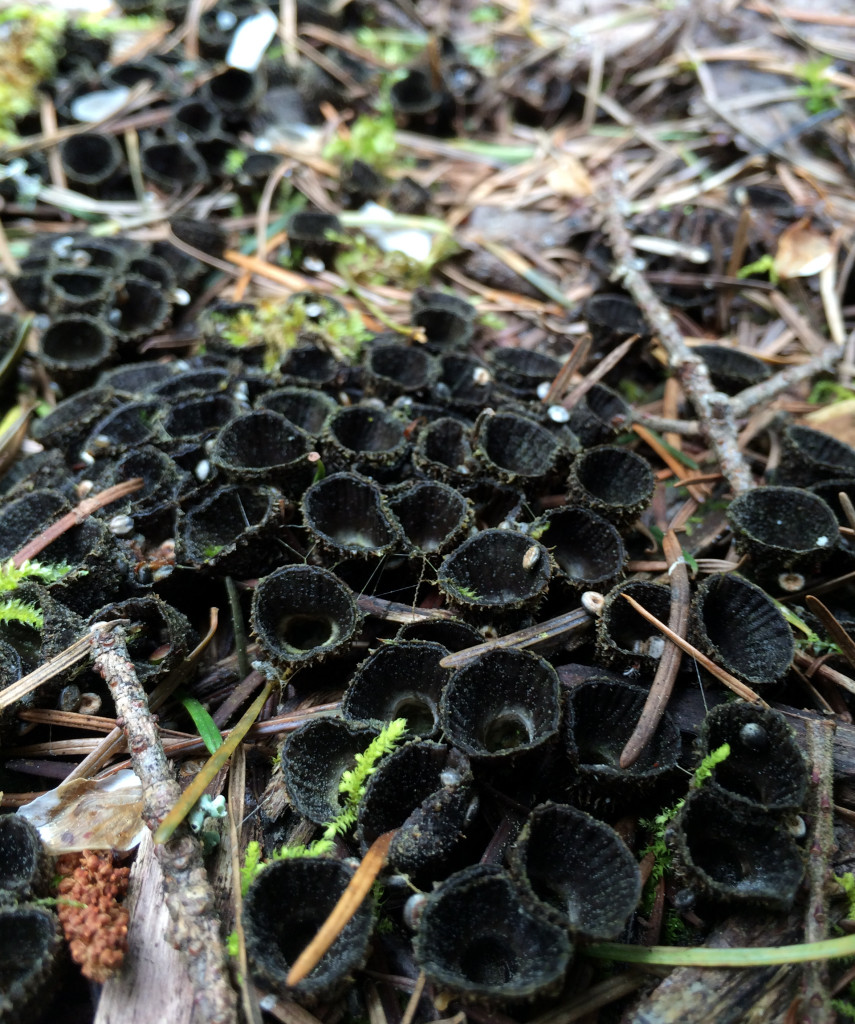 A slew of empty nesters!
A slew of empty nesters!
